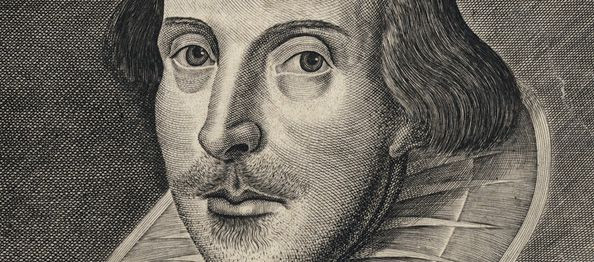Shakespeare Sonnets and Martin Luther King's Speech Sucessfully Stored in Tiny DNA Files

Scientists have managed to "download" all 154 of Shakespeare's sonnets on to strands of synthetic DNA.
What's more, the team of British researchers managed to encode a scientific paper, a photograph and a part of Martin Luther King's I Have Dream speech in artificially produced segments of DNA.
Researchers said that the downloaded information was then read back out with 100 percent accuracy.
They say the latest finding paves the way to storing vast amounts of fata using the same method evolved by mother nature to code for life. Scientists said that the new method, described in the study published in the journal Nature, makes it theoretically possible to store at least 100 million hours of high-definition video in about a cup of DNA. 100 million hours of cinematic entertainment is equivalent to the hourly sum of about every film and TV show ever created.
Furthermore, the information downloaded onto DNA could last for tens of thousands of years. Researchers explained that unlike magnetic tape, which usually degrades within 10 years, DNA is a strong material that can last for tens of thousands of years.
"We already know that DNA is a robust way to store information because we can extract it from bones of woolly mammoths, which date back tens of thousands of years, and make sense of it," researcher Nick Goldman of EMBL-European Bioinformatics Institute, explained in a press release. "It's also incredibly small, dense and does not need any power for storage, so shipping and keeping it is easy."
Another plus side of DNA archives is that, unlike traditional hard disks, they do not require a constant supply of electric power.
Scientists had asked Agilent Technologies to create artificial DNA strands that corresponded with their coding instructions which included a MP3 of Martin Luther King's speech, "I Have a Dream", a JPEG photo of the institute where the researchers worked, a PDF of Watson and Crick's seminal paper, "Molecular structure of nucleic acids", a TXT file of all of Shakespeare's sonnets and a file that describes the encoding.
"We downloaded the files from the Web and used them to synthesize hundreds of thousands of pieces of DNA - the result looks like a tiny piece of dust," Emily Leproust of Agilent Technologies, Inc., a California-based company that volunteered its services, said in a statement.
Researchers said that reading DNA is fairly simple. However, writing it has until now been a major obstacle to making DNA storage a reality. They explain that there are two challenges: first the current technology only allows DNA to be manufactured in short strings, and second both writing and reading DNA are prone to errors, especially if the same SNA letter is repeated.
Researchers in the latest study wanted to create a code that can solve both problems.
"We knew we needed to make a code using only short strings of DNA, and to do it in such a way that creating a run of the same letter would be impossible. So we figured, let's break up the code into lots of overlapping fragments going in both directions, with indexing information showing where each fragment belongs in the overall code, and make a coding scheme that doesn't allow repeats. That way, you would have to have the same error on four different fragments for it to fail - and that would be very rare," co-researcher Ewan Birney said in a statement.
The "error correction" technique involves overlapping short strands of DNA and independently writing every million-molecule fragment of code four times. In essence, this creates three back-ups for each fragment, therefore significantly reducing the chances of mistakes. Researchers explained that the same error would have to appear on all four different fragments for it to fail, which would be very rare.
"We've created a code that's error tolerant using a molecular form we know will last in the right conditions for 10,000 years, or possibly longer," said Goldman. "As long as someone knows what the code is, you will be able to read it back if you have a machine that can read DNA."



























